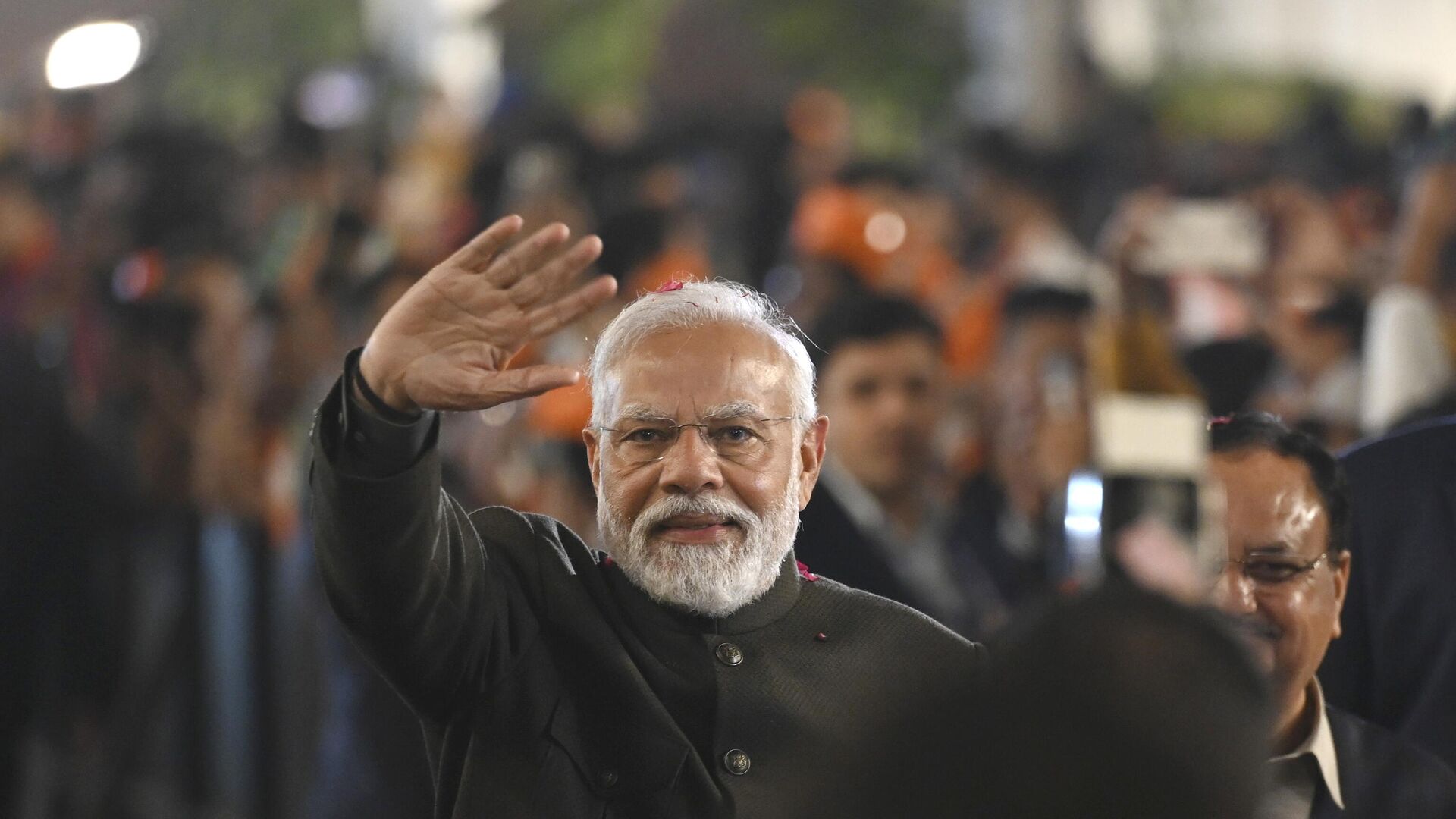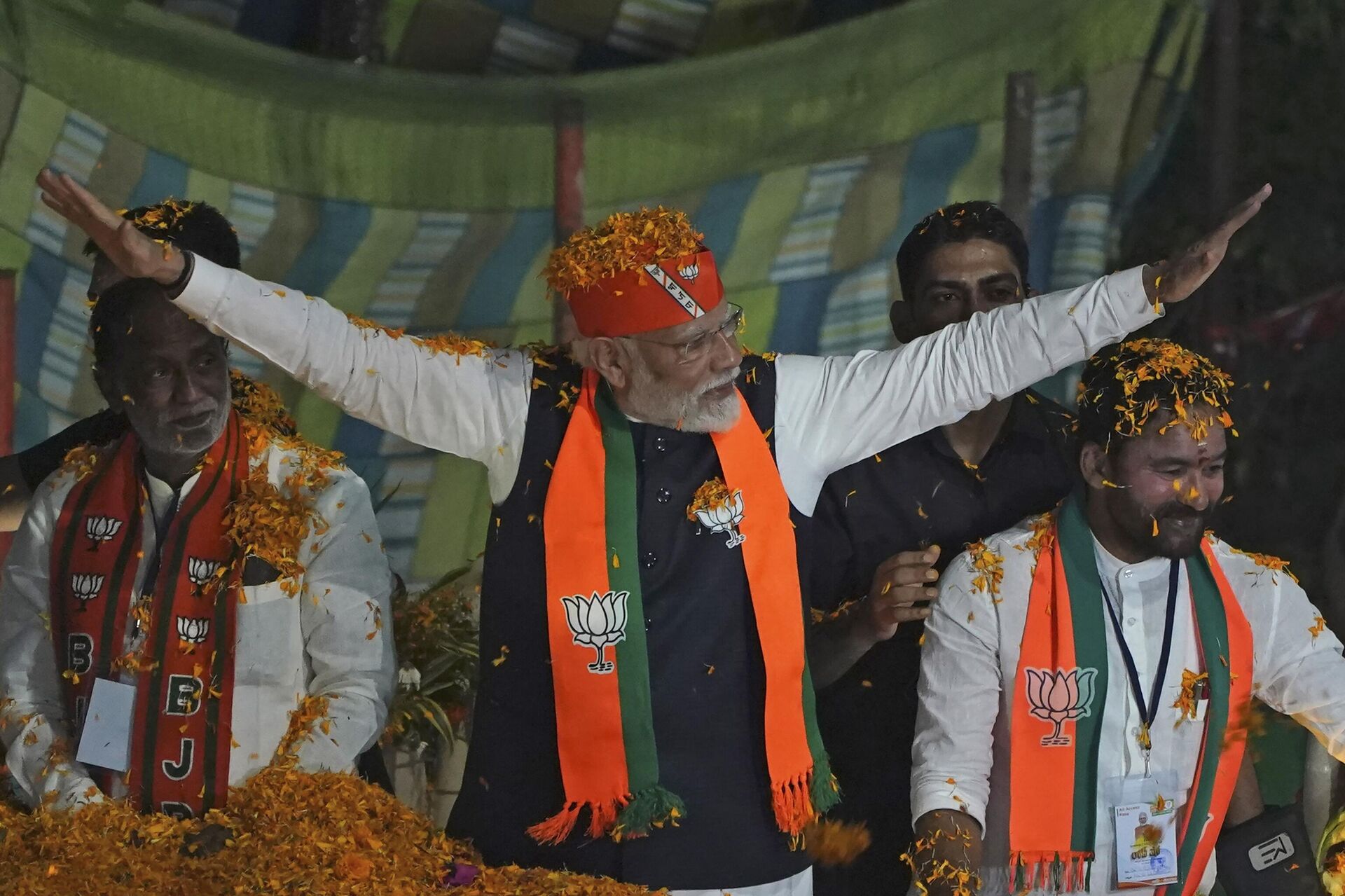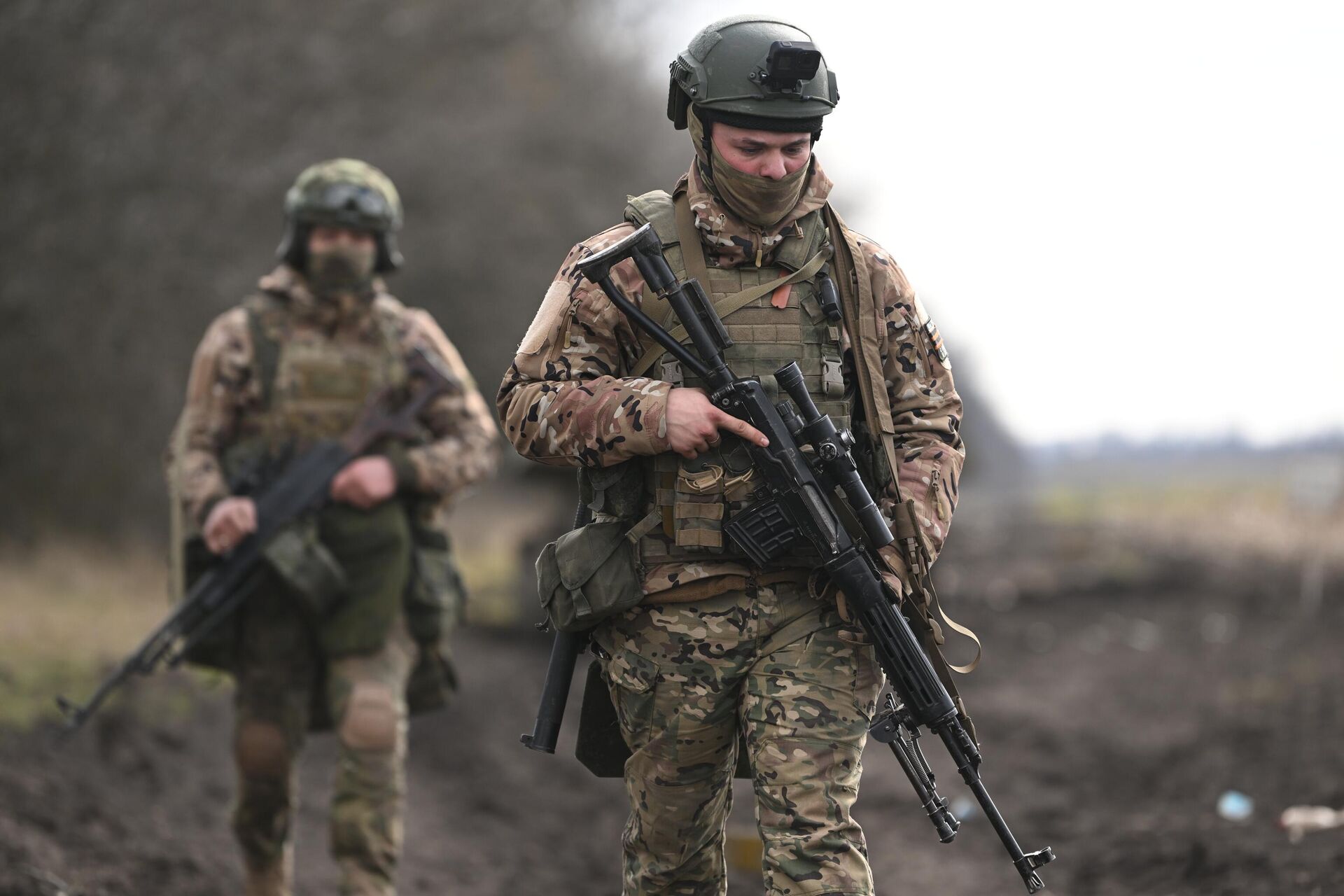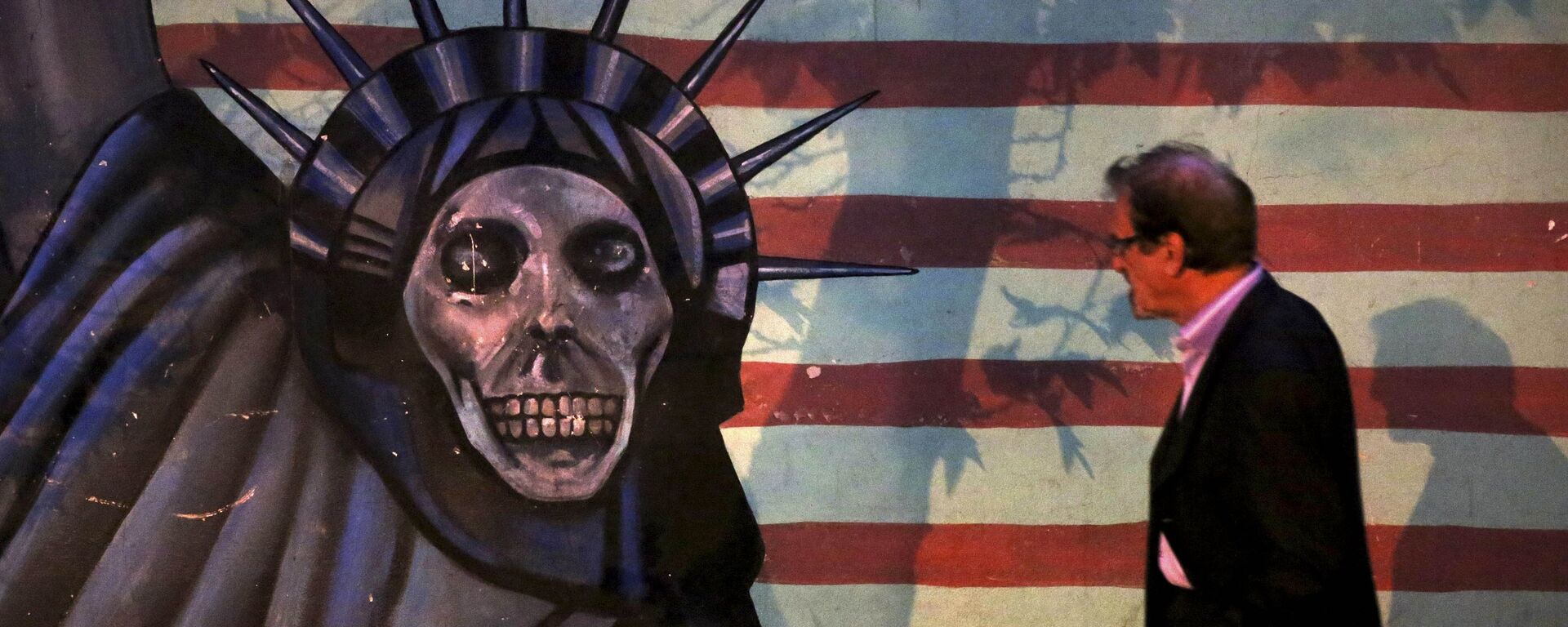Indian Elections in 2024 and Why They Matter for The World
19:02 28.02.2024 (Updated: 19:03 28.02.2024)

© AP Photo
Subscribe
As the general elections in India approach, geopolitical analyst S.L. Kanthan explores how the poll could impact globally in his column for Sputnik India.
2024 is a fascinating year when numerous major countries such as the US, Russia, and India will be choosing their next leaders, who will need to make consequential decisions over the next five years when the world will be facing momentous challenges. While the US will be a theater of gripping drama, fortunately Russia and India will have predictable results. President Vladimir Putin and Prime Minister Modi enjoy high approval ratings, and are expected to win re-elections. However, amidst the geopolitical storms over the next five years, they must make monumental decisions that will affect the trajectory of their countries and the world in the coming decades.
Why Modi Will Win
Most analysts predict that PM Modi is guaranteed a third term, because the economy is doing well, Indians have witnessed significant progress in many areas, India’s image around the world has enjoyed a big boost, and the average Indian is optimistic about the future.
India’s GDP is the fastest-growing among large economies – expected to average 6.7% in FY2024 and FY2025. The Rupee’s value has also held steady over the last year. One indication of the rise of India’s middle class is Tim Cook coming to India last year to open up the first Apple stores. Hedge fund guru Ray Dalio has also compared Modi to Deng Xiaoping, whose reforms resulted in the China miracle.
In terms of infrastructure, the Modi government has done quite a good job by focusing on roads, highways, bridges and railways. Some of these – like the Vande Bharat trains or India’s longest sea bridge in Mumbai – are very popular, and are part of India’s $1 trillion spending on infrastructure over five years.
India’s manufacturing has performed quite well over the last couple of years, thanks to the government plans that incentivize foreign companies to move assembly first and eventually production to India. Last year, India’s smartphone exports grew by 100%. By next year, India will account for 25% of all iPhones assembled in the world. Of course, more could be done in terms of tariffs and bureaucracy to boost manufacturing.
On the world stage, Modi has performed quite well. Leaders from Biden and Macron to Putin have very good relations with Modi; and Muslim countries such as Egypt, Saudi Arabia and the UAE roll out the red carpet for Modi. When India recently hosted the Raisina Conference, foreign diplomats, military leaders, and thought leaders from all over the world descended upon New Delhi for three days of discussion on geopolitics, geoeconomics and technology. Last year, India presided over the G20 Summit and delivered key strategic documents on critical topics such as strengthening of multilateralism, countering terrorism, and global health concerns. Modi’s initiative to be the voice of the Global South and the bridge between developed and developing nations seem to resonate well. Overall, Indian voters are quite happy with Modi’s foreign policy accomplishments.

Indian Prime Minister Narendra Modi greets supporters as he arrives for an election campaign rally of his Bharatiya Janata Party (BJP) in Hyderabad, India, Monday, Nov. 27, 2023.
© AP Photo / Mahesh Kumar A.
The poor people in India are also reasonably happy with Modi. Apart from isolated incidents such as the farmers’ protests, people appreciate the fact that 250 million people have been lifted out of “multidimensional poverty” since Modi came to power in 2014. For the religious and nationalist voters, Modi’s vision of “Bharat,” his inauguration of the Ram temple, and his strong stance on national security are compelling reasons to get their votes.
To summarize, get ready for Modi’s third term.
The World Needs Modi, Putin and Xi
The world is at an inflection point that marks the end of an empire – the American Empire. The next phase of the world order is multipolarity, when power is going to be distributed across many countries and regions. The bigger threat for the US is the end of dollar supremacy, which underpins the American prosperity and primacy. Of course, American elites are not going to stay passive and allow this to happen.

Screaming dollar
© Photo : taken from social media
This is why we witnessed the proxy war against Russia with Ukraine as the geopolitical dagger. This is also why we are seeing the ruthless genocide in Gaza – the goal being to stir a regional war in which Iran and its allies can be neutralized. Then, the final goal is a war against China, using other Asian countries such as Japan and the Philippines – possibly even India – as proxies. All the trade wars and tech wars against China are just preliminary steps to weaken China.
The US will push its limits to protect its hegemony and exorbitant privileges. Whatever it takes is the motto. This is why India, Russia and China need steady leaders with experience. Continuity is critical, especially when these countries have to come together and lead the Global South to protect the world from an insane empire.

Indian Prime Minister Narendra Modi, center, Russian President Vladimir Putin, right, and Chinese President Xi Jinping stand for photographs prior to dinner hosted by Modi for leaders of BRICS nations in Goa, India, Oct.15, 2016
© AP Photo / AP Photo/Manish Swarup, File
America is Failing and Dangerous America’s desperation has been obvious since the 2008 Great Financial Crisis when the world understood that the US financial system is a giant Ponzi system. The rapid decline of the US since then has been palpable. The US federal government’s debt has more than tripled since 2008 – from $10 trillion to $34 trillion now. Meanwhile, China has been steadily catching up to and surpassing the US in many areas. Look at these pivotal milestones:
2009: China becomes #1 in exports
2010: China becomes #1 in manufacturing (surpassing the US, which had been #1 for the previous 100 years)
2011: China is #1 in electricity generation and patents
2012: China is #1 in global trade
2013: China is #1 in industrial robot sales, fastest supercomputer, and international tourism
2014: China is #1 in PPP GDP, #2 in stock market
2015: China is #1 in middle class population
2016: China is #1 in publication of scientific papers
This is the time when Americans finally started to wake up from their imperialist slumber. All the propaganda about the “greatest nation” and “exceptionalism” started to evaporate like dew on a sunny morning. Hence began the hybrid wars against China, using Trump as the salesman. The overlords of the USA could not admit that deindustrialization and financialization of the economy had ruined Americans and the economy in every way possible. Resuscitating manufacturing or spending trillions of dollars on fixing the crumbling infrastructure are not “profitable” for Wall Street. So, they are doubling down on their casino capitalism and wars hoping to impose a Great Reset to the financial system – including cancellation of their debt.
The imperialists are running out of time. Even US rating agencies have downgraded US treasuries (bonds); the dollar’s share of global reserve currencies has fallen from 72% to 58% over the last two decades; and dedollarization is accelerating. Soon, the effects will be felt, making it harder for the US government to print money or borrow trillions of dollars every year. This will result in high inflation, skyrocketing cost of imported goods, and massive budget cuts which will include closing down military bases. The last one scares US elites the most.
The Empire’s desperation is also seen in their refusal to negotiate peace with Russia now vis-à-vis Ukraine. They are upping the ante by claiming they would send long-range missiles and F-16 fighter jets to Ukraine. And since NATO is too afraid to get involved directly, the new proposal is to allow individual countries to send mercenary soldiers into Ukraine. How close to a nuclear war will the globalists get before backing down?
While the Western propaganda narrative so far has been that Putin allegedly invaded an innocent Ukraine, the US media is now beginning to acknowledge US’ subversion. A recent New York Times article describes how the CIA established 14 spy bases along the Ukraine-Russia border after 2014; and how the CIA trained special Ukrainian commandos and spies. Clueless chief Stoltenberg has also admitted that NATO members have been training Ukrainian soldiers – including neo-Nazi groups such as the Azov Battalion – since 2014.
The US support for Sikh separatists is also an attempt to gain leverage in geopolitical negotiations with the Indian government. However, the Modi government has been demonstrating that India is no pushover. Moreover, whenever Indian foreign minister Jaishankar gets a chance, he reminds Blinken and other US officials that Western domination is over, the multipolar world is here, and the Indian government will pursue an independent path focused on what is best for India.
Geopolitical Strategy for Modi and Putin
Putin has done the impossible so far in defending Russia against the collective West. Someday, historians will study in depth how Russia thwarted the Western sanctions, withstood the theft of its foreign exchange reserves, strengthened relations with the Global South, and defeated the US/NATO military and intelligence in Ukraine.
Moving forward, what should be Russia’s strategy? Hopefully, Europe will come to its senses in the future. However, for the near-term, Russia needs to focus on BRICS expansion, creating a robust alternative financial system, and forming a coalition of peace and development. There are immense opportunities for infrastructure investment, trade and economic development.
Russia must also work with China and India in becoming the leaders in essential technologies, which provides the US extraordinary power over the rest of the world. Perhaps there could be BRICS incubators that bring in the smartest minds from the Global South – sort of a new Silicon Valley. Also, Russia could invest some of its rupees – from oil sales – in Indian startups, which are now dominated by US investors. Finally, Russia could mediate a comprehensive peace agreement between China and India.
As for India, it must explore the options of negotiating peace between Europe and Russia as well as itself fostering permanent detente with China. After all, India’s foreign policy is based on multilateralism, all-alignment, neighborhood first strategy, and a philosophy of “the world is our family.” While everyone talks about how “an enemy of my enemy is my friend,” why is nobody talking about “a friend of my friend is also my friend”? If Russia and China can have “no limits” partnership, and if Putin and Xi Jinping can be great friends, why cannot Modi be a part of that alliance? Perhaps Modi can do a Nixon and visit China to reset relations between the two most populous nations. Problems that are created by humans and can be solved by humans.
There are also pragmatic reasons why India needs good relations with China. First, India’s demographic dividend will not last much longer. The fertility rate has already dropped below the replacement level (of 2.1); and the share of the working-age population will start to decline by 2036. Thus, major reforms need to happen now and over the next decade.
Second, the Gen-Z (aged 15 through 27) population in India is 120 million, and the youth unemployment rate is high at around 40%. Thus, there is an urgent need to create jobs, which can be achieved by helping China offshore manufacturing jobs. India’s manufacturing sector still accounts for only 15% of GDP, the same as it has been for a long time. To achieve Modi’s vision of self-reliance and Make-in India, India needs to lure Chinese companies just like how China once invited Japanese and South Korean companies.
Third, while India has made significant progress over the last decade, the two areas where India needs to focus on are scale and speed. For example, last year, India’s solar capacity increased by 8GW, while China added 200GW. And while China has 45,000km of high-speed rail, India has yet to get started. Thus, in order to achieve efficiency at scale, India needs more FDI and partnerships with Chinese companies. It will be a win-win situation.
Finally, as pointed out before, the American Century is coming to an end, and India must prepare for this new world where dollar is not the king, countries are unafraid to reject US diktats, the center of innovation is Asia, the fastest growing region is Africa, the world looks to BRICS+ for diplomatic solutions, and TikTok is more popular than Facebook.
Conclusion
The next five years will be the most consequential and dangerous since the 1930s when the world was sleepwalking into calamitous war. As the world’s most populous nation and the fastest-growing major economy, India should assume a leadership role in maintaining global peace and guiding the birth of a multipolar world while partnering with Russia, China, Iran and others from the Global South. The third term will be a historic opportunity for Indian Prime Minister Modi to transform India into an industrial powerhouse, an exemplary people-centric nation, and a visionary peacemaker.


